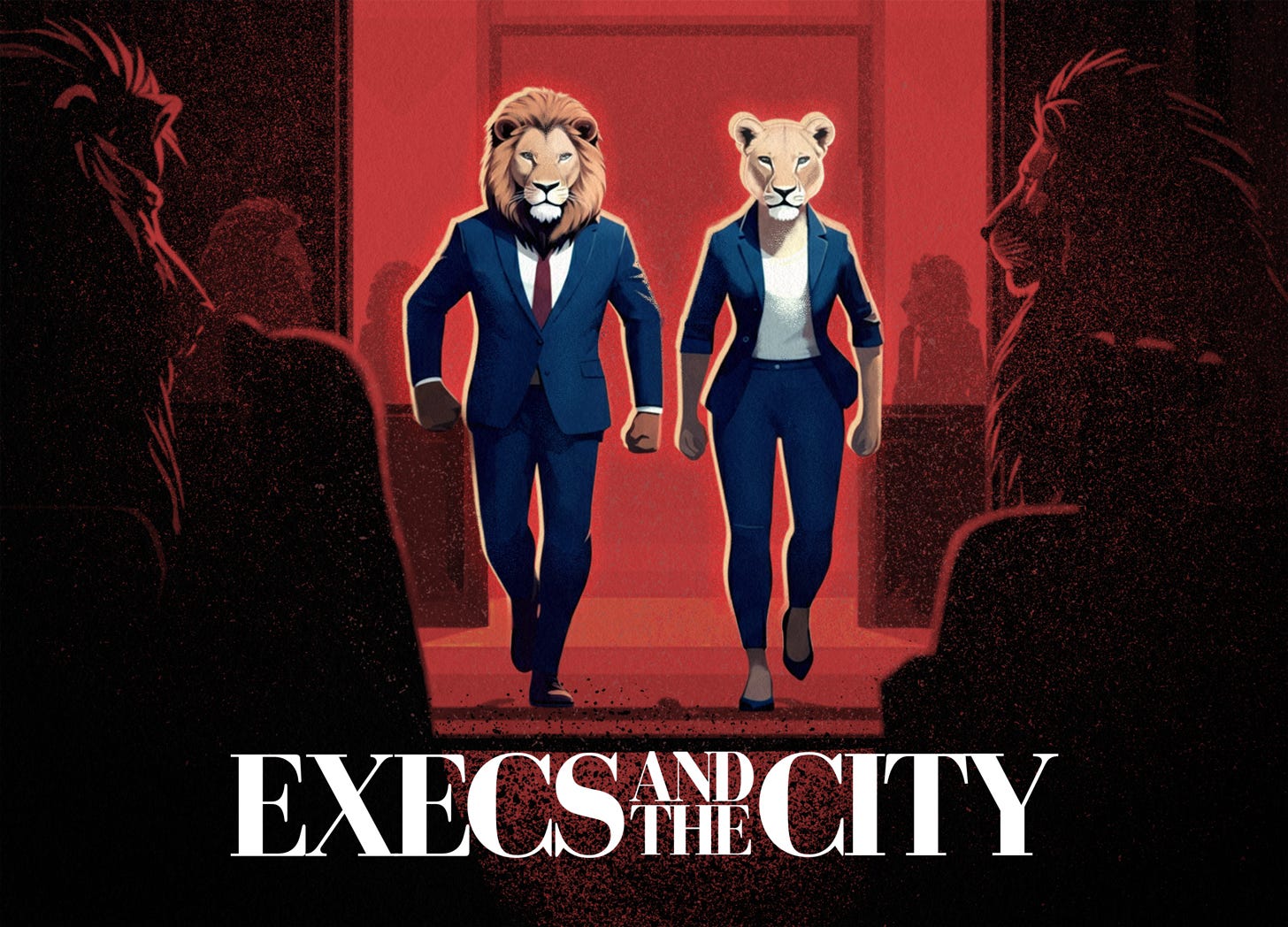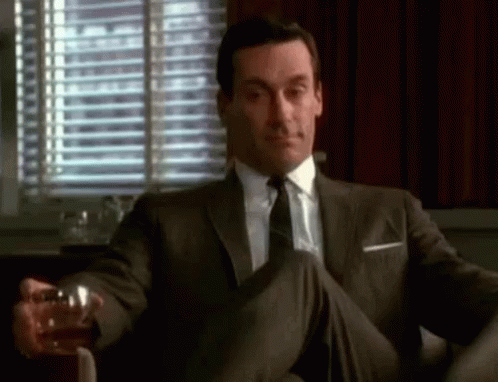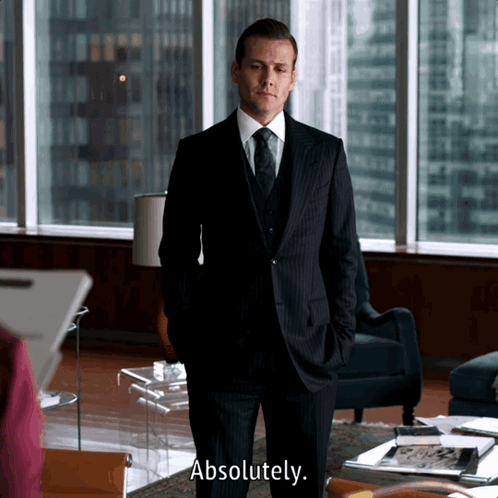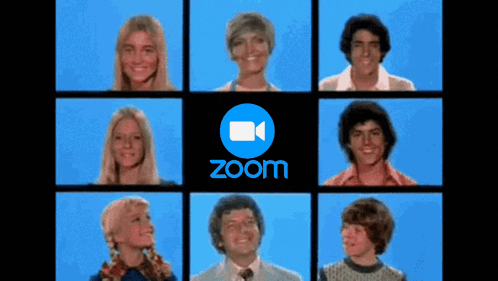Command Authority Before You Speak
Your executive presence is your silent authority. Discover how centered physicality, vocal power, and attentional control command respect and unlock opportunities before you utter a single word.
Two executives enter the boardroom.
Both have identical credentials, experience, and technical expertise. Yet within seconds, everyone knows who's in charge—before a single word is spoken.
That's presence.
While one executive shifts nervously, adjusts their clothing, and speaks with an upward questioning inflection, the other moves deliberately, maintains strategic stillness, and speaks with quiet certainty.
The difference is stark. And the impact on their careers is even more dramatic.
Forget power suits and rehearsed handshakes. Real executive presence runs deeper. It's about commanding attention through deliberate nonverbal signals that trigger instant authority recognition. People judge your leadership capacity in milliseconds, creating the psychological foundation for everything that follows.
I've watched thousands of senior leaders walk into career-defining moments, and the pattern is unmistakable. Your presence—how you physically embody authority—creates an immediate frame that either amplifies or undermines everything you say afterward.
You're leaving money on the table if you've mastered strategy but neglected presence.
I've observed brilliant leaders with flawless credentials undermine themselves with weak physical posture and constant projections of anxiety. Their voices rise at the end of statements, transforming assertions into questions. Their eyes dart around during conversations, signaling uncertainty.
When they're passed over for opportunities or receive offers below market value despite exceptional expertise, they're confused. The problem isn't their resume; it's how they physically communicate uncertainty during critical moments.
If you don't believe in yourself, who will?
True presence consists of three essential components:
Centered Physicality: How you position and move your body to signal confidence without aggression
Vocal Authority: How you control your voice to command respect without dominating
Attentional Control: How you maintain dual awareness of yourself and others during high-stakes interactions
Masters of these elements create outsized returns in their careers. They're perceived as more competent, trustworthy, and leadership-worthy before speaking a single word about their qualifications.
Let me show you exactly how to develop this career-defining presence—and why it matters more now than ever before.
Presence Matters More Than Ever
Your technical skills got you here. But they won't take you further.
Artificial intelligence is rapidly commoditizing technical expertise and intelligence quotient (IQ). The algorithms are coming for your spreadsheets, your analysis, your process optimization—everything you spent years mastering.
What remains uniquely human?
Your ability to lead through uncertainty. Your capacity to influence without authority. Your presence in moments that matter. Your emotional quotient (EQ).
The research is clear.
Executive presence accounts for 26% of what it takes to advance within an organization, according to research by Coqual (formerly the Center for Talent Innovation). A survey of nearly 400 senior executives found that 89% believe executive presence helps leaders get ahead, while 78% say a lack of it can hold leaders back.
Consider ‘Susan,’ a brilliant COO with unmatched technical expertise.
After being passed over for the COO role at a Fortune 500 company, she asked me to review her final interviews which were recorded. The issue wasn't her answers—it was how she delivered them. She led with a tense and nervous posture, rapid speech, and her constant throat-clearing undermined her otherwise flawless strategic vision and track record.
The board chair later confided: "Something didn't feel right. She’s obviously smart, but I couldn't see her leading us through a crisis."
That "something" was presence—and it cost Susan a multimillion-dollar compensation package.
With a balanced, diverse board making the decision, we suspect her presence—not gender bias—was the primary factor at play.
Presence directly affects business outcomes:
Leaders with strong executive presence are more effective at influencing decisions, reducing resistance, and moving initiatives forward
Presence strengthens trust and credibility, enabling leaders to build stronger relationships with stakeholders and attract top talent
Research shows that people make personality assessments in under five minutes, with leaders who master executive presence perceived as confident, credible, and trustworthy
The stakes have only increased with remote and hybrid work. The screen flattens traditional status markers, making presence even more critical. Your digital image is now your primary leadership interface—yet most executives treat it as an afterthought.
When physical proximity disappears, presence paradoxically becomes more important, not less. A pixelated, poorly lit figure with garbled audio and wandering attention will never command the respect required at senior levels, regardless of their strategic brilliance.
Your presence isn't just about how others see you—it fundamentally shapes how you see yourself. The research on embodied cognition is clear: your physical state directly impacts your thought processes, confidence, and decision-making capacity under pressure.
Leaders who master presence think better because they physically embody confidence. That's not New Age wishful thinking—it's measurable neuroscience.
The question isn't whether you can afford to develop your executive presence.
It's whether you can afford not to.
Component 1: Centered Physicality
The most powerful leaders stand differently.
Watch them closely. While others fidget, shift, and broadcast anxiety, strong executives maintain what I call "centered physicality"—a deliberate physical positioning that signals confidence without aggression. You’ll notice this with standout TED speakers as well.
What exactly is centered physicality?
It's how you occupy space. It's your posture, your movements, your gestures, and even your breathing patterns. It's the physical foundation of authority.
Your body speaks before your mouth opens.
Humans make unconscious dominance assessments based on physicality—it's hardwired from our evolutionary past. Board rooms may have replaced hunting grounds, but the primal signaling remains.
When stakes rise and tension builds, most executives unconsciously display anxiety:
They lean away from challenges
Their shoulders tense and rise toward their ears
Their breathing becomes shallow and rapid
They fidget with objects, clothing, or hair
Their movements become jerky and uncoordinated
These physical ‘tells’ broadcast a clear message: "I'm uncomfortable with conflict" or "I'm not sure I belong here."
The strongest leaders do the opposite. They employ strategic stillness.
Three specific techniques to develop centered physicality:
1. The Grounding Triangle
Before high-stakes moments, plant both feet firmly on the ground, creating a stable triangle between your feet and your core. Feel the ground supporting you. If seated, press your feet into the floor and sit with your back making full contact with the chair.
This isn't just psychological—it's neurological. Research in embodied cognition shows that physical stability creates cognitive stability. You literally think better when properly grounded.
Practice: Before your next challenging conversation, take five seconds to establish your grounding triangle. Notice how this simple adjustment affects your thought clarity and emotional regulation.
2. Strategic Breathing
When confronted with unexpected challenges, most executives unconsciously hold their breath or breathe in a shallow, rapid pattern. This triggers your sympathetic nervous system—the fight-or-flight response—reducing cognitive function precisely when you need it most.
Instead, practice what military commanders call "tactical breathing":
Inhale slowly through your nose for a count of four
Hold for a count of four
Exhale completely for a count of four
Repeat once before responding
This pattern activates your parasympathetic system, maintaining cognitive function under pressure. The board will see someone who remains composed while others become reactive.
Practice: Before responding to challenging questions, take one tactical breath. What you perceive as an awkward pause, others experience as thoughtful consideration.
3. Deliberate Movement
Anxiety creates rapid, jerky movements. Authority moves deliberately.
Watch respected leaders enter a room—they move with purpose, not haste. They don't rush to fill empty chairs or scurry to the podium. They use measured gestures that emphasize key points rather than nervous movements that distract.
Practice: When entering important settings, move at 80% of your normal speed. This subtle downshift signals confidence without appearing artificial.
Physicality in Action: The Boardroom Contrast
Consider this scenario I witnessed: Two division presidents presented strategic plans to the same board. Both had identical technical expertise and compelling data.
The first moved constantly—shifting weight, adjusting papers, touching his face. When challenged, he stepped backward, crossed his arms, and spoke more rapidly.
The second maintained centered physicality. When challenged, she took a deliberate breath, stood her ground, and responded at a measured pace. Her gestures were purposeful extensions of her points.
The board's response?
The first presenter faced skeptical questioning despite solid numbers. The second received collaborative engagement and eventually secured more funding for her division.
Same board. Same day. Different physicality. Different outcome.
The good news? Centered physicality is learnable.
Elite military units, professional athletes, and performing artists all systematically develop these skills. You can too.
Start with this: For one week, practice tactical breathing before every significant interaction. Create a simple trigger—perhaps touching your thumb to your forefinger—to remind yourself to establish your grounding triangle.
Notice what changes.
Your body doesn't just reflect your leadership—it creates it.
Component 2: Vocal Authority
Your voice either commands respect or surrenders it.
No matter how brilliant your insights, how flawless your strategy, or how impressive your track record—if your voice lacks authority, you're undermining yourself with every word.
Most executives focus exclusively on what they say. The strongest leaders know how they say it matters more.
Vocal authority isn't about volume or intimidation. It's about controlling three critical elements that signal certainty, competence, and command:
1. Strategic Pace and Pauses
Nothing signals uncertainty faster than rushed speech. When leaders feel challenged or doubtful, they instinctively speed up—as if outrunning objections through sheer velocity.
The best leaders do the opposite. They slow down during critical points and employ strategic pauses that create weight and significance.
Compare these approaches:
❌
Weak: "Ourquarterlyresultsexceededexpectationsand wethinkwe'llseemoregrowthcomingupnextquarter." (rushed, no breaks)
✅
Strong: "Our quarterly results exceeded expectations. [pause] And we're positioned for even stronger growth next quarter." (measured, with intentional pause)
The content is identical. The impact couldn't be more different.
Practice: Identify your three most important points before any high-stakes conversation. Deliver each one at 80% of your normal speaking pace, with a full second pause afterward. What feels uncomfortably slow to you sounds deliberate and authoritative to others.
2. Downward Inflection Patterns
Listen closely to uncertain speakers. Their sentences end with upward inflections—making statements sound like questions. This speech pattern is the verbal equivalent of asking for permission to speak.
Authority speaks in declarative patterns with downward inflections that signal certainty.
Note the difference:
❌
Weak: "We should consider expanding into Asia?" (rising tone at end)
✅
Strong: "We will expand into Asia." (falling tone at end)
The neurological impact of these patterns is profound. Research indicates that vocal inflection significantly impacts how listeners assess a speaker's confidence and credibility. Specifically, downward vocal inflection—where the pitch falls at the end of a sentence—creates higher confidence ratings and is seen as more authoritative compared to upward inflection, which can signal uncertainty or hesitation.
One study found that when speakers used falling intonation in 75% of their sentences, confidence ratings from listeners were nearly double compared to when falling intonation was used only 25% of the time. The mean confidence score for falling intonation was 5.43 out of 7, compared to 4.30 for rising intonation, demonstrating a substantial boost in perceived credibility and confidence with consistent downward inflection.
This effect has practical applications in fields such as leadership, sales, and public speaking, where vocal tone plays a critical role in building trust and persuading audiences
Practice: Record yourself answering challenging questions. Mark every sentence that ends with an upward inflection. Repeat those sentences with deliberate downward inflections until the pattern becomes natural.
3. Resonance and Projection
The physical placement of your voice dramatically affects how others perceive your confidence.
Anxiety pushes the voice upward into the throat and nose, creating a thin, strained quality. Authority comes from voice placement in the chest and lower register, creating resonance that carries weight.
Compare:
❌
Weak: High, thin, throat-based voice that strains to project
✅
Strong: Lower, chest-based voice with resonance that fills the room without shouting
This isn't about speaking unnaturally deep. It's about finding your authentic voice's optimal resonance point.
Practice: Before important conversations, do this 30-second vocal warmup: Hum a comfortable low note while placing your hand on your chest. Feel the vibration. Then speak from that same resonance point, maintaining the chest vibration while articulating clearly.
The Remote Leadership Voice Challenge
In virtual environments, your voice carries even more weight. Without full body language visible, vocal authority becomes your primary presence tool.
Remote leaders must invest in:
Professional microphones that capture full vocal resonance
Proper microphone technique (consistent distance, minimal movement)
Deliberate pacing that accommodates slight digital delays
More pronounced vocal variety to compensate for flattened digital delivery
The most common mistake? Speaking to virtual audiences exactly as you would in person. Digital communication requires more deliberate vocal technique, not less.
Your voice isn't just conveying your ideas—it's conveying your right to be heard.
Start today: In your next three conversations, focus exclusively on slowing down and using definitive downward inflections on your most important points.
The shift in how others respond will be immediate and undeniable.
Component 3: Attentional Control
Most executives are either fully present or completely absent. The strongest leaders operate differently.
They master what I call "attentional control"—the ability to maintain dual awareness of both themselves and others during high-stakes interactions. This split attention creates a powerful presence loop where you respond authentically while strategically managing how you're perceived.
While others get lost in their notes, absorbed in their thoughts, or fixated on what to say next, elite leaders remain fully engaged with what's happening in the room while monitoring their own signals.
Attentional control consists of three critical practices:
1. Deep Engagement Without Disappearing
Most leaders fall into one of two attention traps:
They focus so intently on others that they lose awareness of how they're coming across
They become so self-conscious about their performance that they stop truly listening
The mastery lies in balancing both simultaneously.
Compare these approaches:
❌
Weak: The executive who nods automatically while mentally rehearsing the next point, missing crucial signals from their audience.
✅
Strong: The leader who maintains eye contact, responds to subtle shifts in the room, and simultaneously monitors their own nonverbal signals.
Practice: In your next meeting, set a silent 5-minute timer. For those five minutes, focus exclusively on others—their words, expressions, and energy. Notice what you typically miss. Then, set another 5-minute timer and divide your attention: 80% on others, 20% on your own posture, expression, and energy. The difference in engagement quality is immediate.
2. Reading Room Dynamics
Superior leaders don't just listen to words—they read the entire room. They notice:
Shifts in energy
Crossed arms or leaning away
Side glances between participants
Subtle nods or head shakes
Changes in breathing patterns
While others plow through prepared remarks, oblivious to mounting resistance or confusion, leaders adjust in real-time based on these signals.
Practice: Before your next group interaction, create a quick mental map of where each person will sit. Throughout the meeting, note each person's engagement level (1-10) at three different points. This simple awareness exercise dramatically improves your ability to monitor group dynamics without losing your train of thought. Don’t be afraid to call people out for their lack of attention—but best do this in private afterwards unless you’ve already established respect from everyone in the group.
3. Maintaining Presence Under Pressure
The true test of attentional control comes under pressure. When challenged or criticized, most executives experience attention collapse—their awareness narrows to the threat, and they lose peripheral awareness of everything else.
Strong leaders maintain expanded awareness even when under fire.
Compare:
❌
Weak: When challenged, the executive becomes defensive, focuses exclusively on the challenger, and forgets about the rest of the room.
✅
Strong: When challenged, the leader acknowledges the critique, maintains awareness of how others are responding to the exchange, and modulates her response based on the broader context.
Practice: Create a simple physical anchor (touching thumb to forefinger, pressing feet into floor) that you can use during challenging moments. This anchor helps maintain broader awareness when your attention wants to collapse around the threat.
The Conference Master: A Case Study in Attentional Control
I once observed two competing executive speakers presenting to the same audience at a conference. Their technical expertise was comparable, but their attentional control couldn't have been more different.
The first speaker delivered flawlessly—but missed critical nonverbal cues showing mounting skepticism from key decision-makers. When challenged, they became defensive and focused exclusively on the challenger, alienating other audience members.
The second noticed when energy shifted, adapted their presentation on the fly, and when challenged, maintained awareness of the entire room. They addressed the specific challenge while subtly acknowledging others' reactions with brief eye contact.
The result? The second presenter was flocked by audience members after the panel discussion—the first was notably ignored.
Same audience. Same day. Different attention. Different outcome.
The Virtual Challenge
In virtual environments, attentional control becomes even more demanding—and more critical.
The screen creates an illusion of eye contact that doesn't actually connect. Many leaders either stare at their own image or focus so intently on the camera that they miss crucial reactions.
Remote leaders:
Position participant videos directly below their camera to maintain approximate eye contact while monitoring reactions (Or use a prompter over their camera for perfect eye contact)
Use gallery view strategically to assess overall room energy
Create deliberate check-in moments to gauge engagement since natural cues are diminished
Acknowledge what they can and cannot see ("I notice some of you have questions...")
Remote mastery requires more explicit attention management, not less.
This attentional control isn't just a leadership skill—it's the foundation of authentic influence.
When you're fully present with others while maintaining awareness of yourself, you create a connection that technical expertise alone can never achieve.
Start today: In your next three meetings, practice the 80/20 attention split—80% on others, 20% on yourself. Notice not just what's being said, but who's engaged, who's resistant, and how the energy shifts throughout the interaction.
Your presence expands when your attention does.
The Digital Presence Imperative
Your digital presence now matters as much as your physical presence—possibly more.
In today's hybrid work environment, your virtual image has become your primary leadership interface. Yet most executives treat this crucial leadership dimension as an afterthought, creating a dramatic disconnect between their in-person authority and their digital impact.
If you appear pixelated, poorly lit, and sound like you're speaking from the bottom of a well, your brilliant strategy won't matter. You've undermined your presence before sharing a single insight.
The strongest leaders approach their digital presence with the same intentionality they bring to in-person interactions. They understand that technical barriers create psychological distance that must be deliberately overcome.
The Complete Digital Presence Stack
While amateur executives use built-in laptop webcams and microphones, the strongest leaders invest in a complete digital presence system:
1. Professional Audio Setup
Nothing undermines authority faster than poor audio quality. Viewers will tolerate video imperfections long before they'll endure bad sound.
Invest in:
Dedicated USB or XLR microphones positioned properly
Sound treatment to eliminate echo and background noise
Noise cancellation software for unavoidable environmental sounds
Proper microphone technique (consistent distance, minimal movement)
The difference is immediate and dramatic. Compare listening to someone through a tinny laptop microphone versus a properly positioned professional mic. One sounds like an amateur; the other commands attention.
Practice: Record yourself using your current setup, then borrow or invest in a quality microphone ($100-300). Play the recordings back-to-back. The difference will shock you—and explain why some leaders consistently command more attention in virtual meetings.
2. Strategic Lighting Design
Amateur lighting creates three common problems:
Harsh shadows that distort facial expressions
Underexposure that obscures emotional cues
Overexposure that creates a washed-out, unprofessional appearance
Use:
Key lighting positioned at 45-degree angles to eliminate shadows
Diffused light sources that flatter rather than flatten
Proper color temperature (4000-5000K) that enhances clarity without harshness
Balanced background lighting that creates professional depth
These aren't superficial concerns. Research shows that proper lighting dramatically improves perception of competence, trustworthiness, and authority in virtual environments.
Practice: Position two adjustable lights at 45-degree angles to your face, slightly above eye level. Eliminate ceiling lighting that casts downward shadows. The improvement in how others perceive you will be immediate.
3. Camera Positioning and Eye Contact
Nothing creates stronger connection than authentic eye contact—yet most executives stare at their screens rather than their cameras, creating a perpetual disconnect.
Use:
External cameras positioned at eye level (never below)
Teleprompter systems that allow reading notes while maintaining eye contact
Proper framing that mimics in-person conversation distance
Backgrounds that enhance rather than distract from their presence
The most powerful approach?
A proper teleprompter setup that places notes directly over your camera lens, enabling you to maintain perfect eye contact while referring to key points.
Practice: Raise your laptop or external camera to eye level. Place your video conference window as close to your camera as possible to minimize the eye contact disconnect.
4. Environment Design
Your background communicates volumes about your standards and attention to detail. Leaders create environments that reinforce rather than undermine their authority.
Compare:
Amateur: Cluttered, distracting backgrounds with poor lighting
Professional: Clean, intentional environments that communicate focus and competence
This doesn't require elaborate home office renovations—even a simple, well-lit backdrop can dramatically improve perception.
Investment with Measurable Returns
A complete digital presence makeover requires an investment of $500-1500—a fraction of what most executives spend on business attire or travel. Yet the impact on how you're perceived in an increasingly virtual leadership environment is immeasurable.
This isn't about vanity or appearances. It's about removing technical barriers that prevent your leadership presence from translating effectively in digital environments.
Start today: Identify your weakest digital presence element (usually audio or lighting) and make one meaningful improvement. Then note how differently others respond to your virtual contributions.
In a world where your digital image has become your leadership avatar, technical excellence has become a prerequisite for presence mastery.
Advanced Techniques
Your true presence isn't revealed during comfortable moments—it's exposed under pressure.
Anyone can project confidence when things go smoothly. The real test comes when you're challenged, criticized, or caught off-guard. These high-pressure moments separate merely competent executives from truly commanding leaders.
The strongest leaders maintain their presence precisely when others lose theirs. They transform potentially destabilizing moments into opportunities to demonstrate unshakable composure.
The Pressure Paradox
When faced with hostility, criticism, or unexpected challenges, most executives experience a threat response. Their bodies flood with stress hormones, triggering three counterproductive reactions:
Physical constriction (tension, shallow breathing)
Emotional reactivity (defensiveness, irritation)
Cognitive narrowing (reduced strategic thinking)
Commanding leaders do something different.
They create space between stimulus and response—a momentary pause that allows them to choose their reaction rather than be hijacked by it.
Here are four advanced techniques for maintaining unshakable presence under pressure:
1. Pattern Interruption Responses
When caught off-guard by hostility or unexpected challenges, most leaders rush to respond—often defensively. This reaction signals weakness and undermines authority.
Instead, employ a pattern interruption that creates space:
❌
Weak: Immediate defensive response or counterattack
✅
Strong: "That's an interesting perspective. [pause] Let me consider that for a moment."
This pattern interruption does three powerful things:
Stops your automatic threat response
Demonstrates unshakable confidence
Creates space for strategic thinking
Practice: Identify your typical reactive patterns under pressure. Create three specific pattern interruption phrases that feel authentic to you. Rehearse them until they become automatic.
Here are three specific pattern interruption phrases you might use when under pressure:
"To be honest, I wasn’t expecting that push back. Let me take a moment to consider that fully."
"I appreciate you raising that point. It deserves careful consideration."
"That's an interesting challenge to our assumptions. Let's explore that further."
2. Centered Breathing During Confrontation
Under pressure, most executives unconsciously hold their breath or breathe rapidly from their upper chest. This signals anxiety and triggers your fight-flight-freeze response precisely when you need clear thinking.
The strongest leaders maintain diaphragmatic breathing even during intense confrontation:
❌
Weak: Shallow, rapid chest breathing or breath-holding during challenges
✅
Strong: Continued diaphragmatic breathing while maintaining eye contact
Practice: When you feel yourself becoming defensive, place one hand lightly on your stomach. Take a single slow breath that expands your belly rather than your chest. This simple physical cue activates your parasympathetic system and maintains cognitive function under pressure.
3. Physical Anchoring Techniques
Your body responds to perceived threats before your conscious mind registers them. These physical responses then accelerate your emotional reactivity in a negative spiral.
Use physical anchors to interrupt this cycle:
❌
Weak: Allowing tension to build throughout your body during confrontation
✅
Strong: Employing subtle physical anchors that maintain presence under fire
Specific techniques:
Press your feet firmly into the floor while maintaining relaxed shoulders
Touch your thumb to your middle finger while breathing normally
Soften the muscles around your eyes and mouth while keeping your posture straight
Practice: Before your next high-stakes interaction, establish a specific physical anchor. When pressure mounts, activate this anchor while continuing the conversation. The difference in your perceived composure will be remarkable.
4. Strategic Composure When Others Lose Control
When tensions rise, most rooms develop a contagious emotional climate. If one person becomes heated, others tend to match that energy—creating escalating cycles of reactivity.
The most powerful presence technique is maintaining strategic composure when everyone else is losing theirs:
❌
Weak: Matching escalating emotional energy in the room
✅
Strong: Creating striking contrast through deliberate calmness
This strategic composure isn't passive—it's a powerful leadership move that often results in others modulating their behavior to match yours rather than vice versa.
Practice: In your next heated discussion, experiment with becoming progressively calmer as others become more animated. Notice how this creates a striking contrast that often repositions you as the natural authority in the room.
A Real-World Collapse
Let me share a real story that demonstrates the catastrophic impact of presence failure under pressure.
One week into my new VP of Marketing role, I witnessed my boss—the CMO who had hired me—completely unravel during a company offsite. With the entire company present, the CEO and CRO asked a simple question about how our marketing efforts would translate to revenue.
What happened next was a masterclass in presence collapse.
The CMO became visibly defensive—stammering about "why that's not the point of marketing" and launching into a disjointed ramble about brand value. As tension mounted, their physical presence deteriorated—fidgeting nervously in front of the entire executive team and staff.
Compounding the disaster, they had just led a "team building" exercise about crafting cocktails, and their intoxication only exacerbated their inability to maintain composure.
The situation spiraled completely out of control. The CMO ended up in tears, stormed out of the room, and left everyone in stunned silence.
They were fired on the spot.
This catastrophic presence failure didn't just end a career—it created lasting reputational damage that followed them long afterward.
The lesson couldn't be more clear.
Expertise without presence mastery is a professional liability. Had this CMO employed even basic presence techniques—a pattern interruption response, centered breathing, or physical anchoring—they might have navigated the moment successfully.
The good news? These advanced techniques are learnable through deliberate practice. Even high-pressure situations can be managed with the right preparation.
Start today: Identify your typical response pattern under pressure. Choose one technique from this section and practice it deliberately in your next three challenging interactions.
Your authority isn't demonstrated by never being challenged—it's revealed by how you respond when you are.
Your 14-Day Presence Transformation
Knowledge without action creates zero change. This 14-day program builds your executive presence one focused practice at a time.
Days 1-3: Centered Physicality Foundation
Day 1: Grounding Triangle
Stand with feet shoulder-width apart, feel the floor supporting you for 2 minutes
Press both feet firmly into the floor before speaking in meetings
Write down 3 specific reactions you noticed from others today
Day 2: Strategic Breathing
Practice 5 breaths using the 4-4-4 count (inhale 4, hold 4, exhale 4)
Take one deep breath before answering any challenging question
Respond to challenging questions by asking for additional context or reframing
List 2-3 moments where breathing and taking your time helped your thinking remain clear
Day 3: Deliberate Movement
Walk at 80% of your normal speed, noticing how it feels
Use hands to make 3 deliberate gestures when making important points
Ask one trusted colleague for feedback on your physical presence today
Share with your leadership team that you're making improvements and ask to be held accountable.
Days 4-6: Vocal Authority Development
Day 4: Strategic Pacing
Record yourself reading a paragraph normally, then again 20% slower
Identify key points in meetings and deliver them at 80% of your normal pace
Day 5: Downward Inflection
Practice saying 5 statements with your voice dropping at the end of each sentence
End every recommendation with a downward voice tone
Count how many times you caught yourself using upward (questioning) inflections
Day 6: Voice Placement
Place hand on chest, hum for 30 seconds feeling vibration, then speak from that same place
Keep your voice in your chest, not your throat, during all presentations
Experiment with pitch to convey different emotions: higher pitches for excitement or urgency, and lower pitches for seriousness or calmness. Adjust volume to emphasize key points and maintain audience engagement
Note whether people interrupted you less today
Days 7-9: Attentional Control Mastery
Day 7: Deep Engagement
Plan to focus 80% on others, 20% on yourself in today's meetings
When your mind wanders, touch thumb to finger as a reminder to refocus
Try a mantra such as, "I'm here for a reason" as a subtle brain hack to build your confidence.
Write down 3 things you noticed today that you typically miss
Day 8: Reading the Room
Note key participants prior to every meeting and why they're in the room
Rate each person's engagement (1-10) at beginning, middle and end of meetings
Identify who became more engaged and who disengaged during your meetings
Note if anyone challenges less engaged participants, they're typically the leaders with stronger presence
Day 9: Presence Under Pressure
Write and practice saying "That's an interesting perspective. Let me consider that." and other transition phrases that will help you buy time calmly
Use your phrases when challenged instead of responding defensively
Reflect on how people reacted when you used this approach
Days 10-12: Digital Presence Optimization
Day 10: Audio Upgrade
Test your current microphone by recording 30 seconds and listening back
Keep microphone exactly 6 inches (make a hang loose gesture and measure from thumb to pinky) from your mouth (for most podcast mics) in all virtual meetings
Order a USB microphone if your current audio isn't crystal clear.
Shure MV7 for USB mics
Shure SM7B if you have an advanced mixer and XLR set up
Day 11: Lighting Refinement
Test how your face looks on camera with different window/light positions
Position main light source directly in front of you, not overhead or behind
Set up two lamps at 45-degree angles to your face for your next virtual meeting
I don't recommend ring lights, as they are harsh
2 Elgato Key Light Air work well for low cost and adjustable set ups
(I'll put a full equipment guide out in a few weeks)
Day 12: Camera and Environment
Raise laptop/camera to eye level using books or a stand
Look directly at the camera lens when speaking, not at faces on screen
Remove any distracting or unprofessional items visible in your background
Consider a camera upgrade
A Sony ZV-E10 with an Elgato CamLink and Elgato Teleprompter will rock your world
Days 13-14: Integration and Real-World Testing
Day 13: Comprehensive Presence
List the 3 presence techniques that felt most impactful for you
Intentionally use all 3 techniques in every meeting
Rate your overall presence today on a 1-10 scale, noting what worked best
Remember to be authentic to your individual style — this isn't about becoming a robot
Day 14: Strategic Application
Identify your most important upcoming meeting in the next week
Practice your full presence toolkit in preparation
Create a pre-meeting ritual combining grounding, breathing, and intention-setting
Start today: Choose just ONE technique—whichever resonated most strongly—and implement it immediately. The strongest presence transformations start with a single consistent change.
Conclusion
Mastering presence isn't optional for today's executives—it's the foundation upon which all other influence is built.
Remember, presence isn't an innate trait reserved for a select few. It's a learnable skill composed of specific techniques that create measurable results when practiced deliberately. The investment required is minimal, but the returns are extraordinary—transforming how you're perceived, how you perform under pressure, and ultimately, how you're compensated.
Your presence speaks louder than your words. It's the signal cutting through the noise, telling others whether you truly belong at the highest levels of leadership.
Next week, we'll tackle Rhetoric: Strategic Communication as Leverage—where you'll discover how elite executives use specific language frameworks to dramatically reshape how others perceive their value. You'll learn practical power language techniques that create immediate advantages in negotiations and strategic conversations.
The question is no longer whether you can develop commanding presence. It's whether you'll continue to pay the price of not having it.
Need help applying this? Upgrade to paid for monthly live sessions with Jacob.
Stay fearless, friends.








